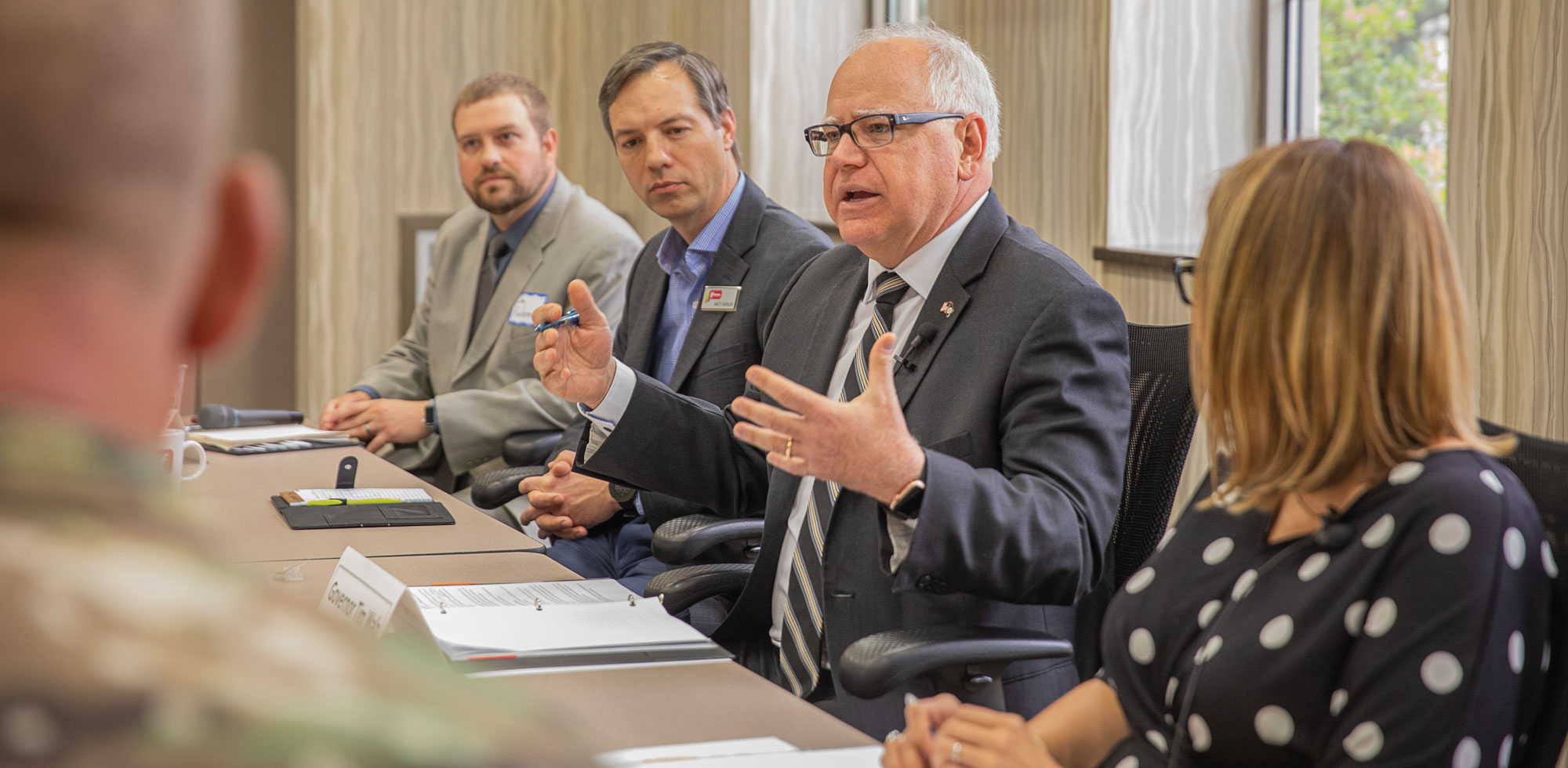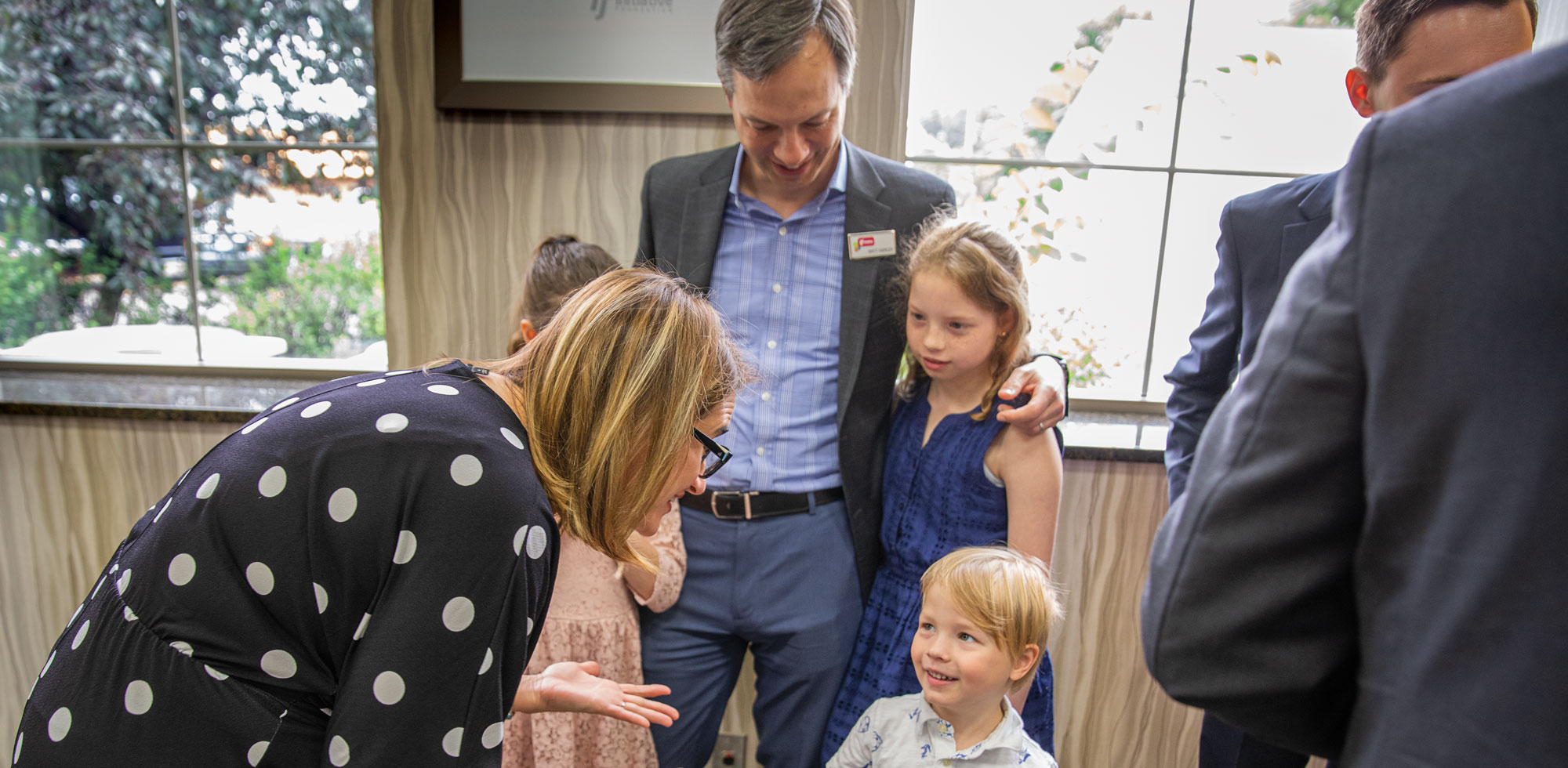
Local Needs, Local Solutions
By Gene Rebeck | Photography by John Linn
An Initiative Foundation pilot program helps three Central Minnesota communities navigate child care barriers and create desperately needed options.
A couple of years back, Jason Polovick stood up at a community meeting in Todd County, pulled out his wallet and declared, “I will help pay for child care for any qualified employee.”
Polovick is an administrator at the Central Todd County Care Center (CTCCC) in Clarissa, which provides care for older residents in several small towns along U.S. 71, from Browerville to Bertha. Polovick employs nearly 90 full- and part-time workers. He needs to hire a few more to be fully staffed.
To attract and keep employees, Polovick and his management team know they have to provide the right mix of benefits. That’s why CTCCC in 2017 introduced a flexible-spending account program that allows employees to earmark up to $1,500 of their annual pre-tax pay to help cover child care costs. For those who participate, CTCCC makes a dollar-for-dollar match.
The flexible-spending program is an example of the creative thinking rural areas need to employ as they address their child care challenges. In Greater Minnesota, the total number of licensed in-home family child care operators—the child care option most rural parents depend on—has dropped by more than 25 percent in the last decade. That’s a loss of 20,000 child care slots, which are only partially offset by the 5,000 new positions that have been created by the expansion of child care centers—mostly in higher population centers—that have opened across the state.
“Child care is an economic and workforce development issue,” said Matt Varilek, Initiative Foundation president. “Without adequate child care, businesses can struggle to attract and retain employees, especially younger members of our workforce. At the same time, child care centers are having difficulties of their own, since they can’t charge enough to pay competitive wages.”
This issue has gotten statewide attention. The Minnesota Legislature in 2019 awarded $1.5 million in funding to the Minnesota Department of Employment and Economic Development for distribution around the state, including $120,000 to each of the six Minnesota Initiative Foundations, to add at least 2,000 slots of quality, affordable child care. To champion and highlight the cause, Minnesota Gov. Tim Walz and Lt. Gov. Peggy Flanagan visited different regions of the state—including a stop this past July at the Initiative Foundation’s Little Falls headquarters—to talk with those who are on the front lines of the issue.
Additional funding of $150,000 from the Minnesota Department of Human Services has helped the Foundation kick off its Child Care Solutions pilot program, which is designed to encourage innovative, local solutions that meet community needs. The Foundation is teaming up with First Children’s Finance, a national nonprofit that provides loans and business assistance to child care providers that serve low- and moderate-income families.
Little Falls, Greater St. Cloud and Todd County are the first three communities to take part in the pilot program. Each will work with First Children’s Finance to determine the barriers their communities face and to identify opportunities to narrow the gap.

The Challenge
At a time when a record number of child care providers are retiring, people who want to get into the child care business face numerous obstacles, including high startup costs and complex regulatory laws. The economics are equally daunting: Both family child care providers and child care center owners face razor-thin profit margins. With average pay hovering around $10 per hour, it can be difficult to find staffers. In rural areas with lower incomes, it is not uncommon for providers to say they cannot raise rates—or increase employee pay—because families will be priced out.
These circumstances reinforce the widely held perception that the child care profession amounts to “low pay, long hours, no benefits, and no respect,” said Marcia Schlattman, program manager for Waite Park-based Milestones, which administers several early childhood learning and development programs. To be sure, there are people who find fulfillment in the profession. But when the economy is strong, it’s not uncommon for prospective employees to seek jobs with higher pay and better benefits.
Some communities also confront what might be called the 24-hour problem. In the Todd County community of Long Prairie, agricultural processor Central Bi-Products operates around the clock. “Home providers can’t possibly cover 24 hours,” said Luan Thomas-Brunkhorst, director of the Long Prairie Chamber of Commerce. Another local business, Long Prairie Packing, has 12-hour shifts, which is equally difficult for child care providers to cover. Adding to the challenge: a language barrier. A full one-third of Long Prairie’s population is Hispanic, and many still are refining their English-speaking skills. Currently, there are no licensed Spanish-speaking providers in the area.
A lack of child care flexibility also is a challenge for people who want to continue their education to advance their careers. At Central Lakes College in Brainerd, skill-building programs such as nursing and Computer Numerical Control (CNC) machining tend to cater to older students, many of whom have children. The dearth of child care access has forced some students to discontinue their studies.

Piloting The Possibilities
Each of the three communities in the pilot program are working with Heidi Hagel-Braid, regional director for Minnesota and the Dakotas at First Children’s Finance, to identify ways to increase child care options. The Staples-Motley area is exploring what’s known as a pod system, which houses different care providers in one location to lower overhead costs. The Little Cardinals Academy, which is operated through the Motley school district, could also become a pod center since it has a playground and indoor space designed for kids. Public-private partnerships are another possible approach:
- Central Lakes College is interested in providing access to under-used space on the Staples campus for a child care facility.
- A partnership between the Little Falls school district and an area construction company has resulted in plans for a new child care center with space for 70 children. The center’s employees will be on the school district’s payroll, which will provide district wages, benefits and vacation time. The fees paid by parents will be used to service the debt on the building.
- Little Falls High School plans to offer care assistant classes for students 16 and older. Students who complete the course can work in the child care facility, which is scheduled to open in time for the 2020 school year.
Once communities decide on a viable approach, First Children’s Finance will help them develop financial modeling and a strategic plan to get the idea moving forward. Upon completion of their strategic plan, the Initiative Foundation will provide a match grant of $10,000 to implement their goals.
Employers like Polovick know how important it is to strive for community-based solutions. “We are trying to do whatever we can to keep the community healthy—by providing good jobs with good benefits,” he said. “And then we need to help those people to raise their families, because those children will someday run the community.”